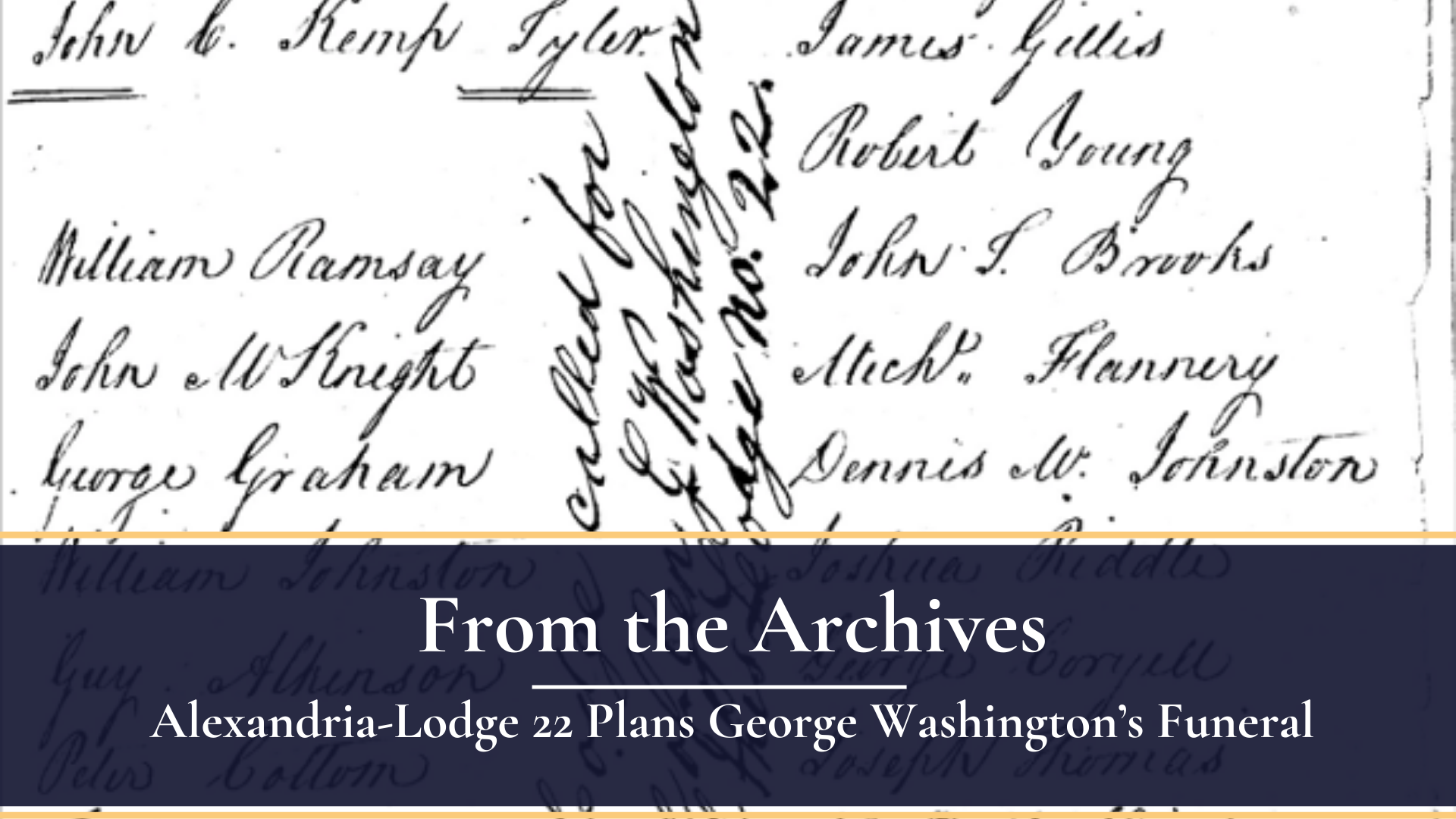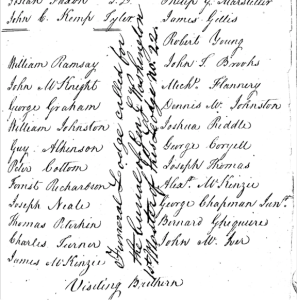Bro. Jonathan J. Siudmak, Junior Warden
Originally presented in at the Stated Communication on May 9, 2024 as part of Mental Health Awareness Month, this topic is always timely and important to the Craft.
When was the last time you earnestly answered the question, “How are you?” Equally important, when was the last time you asked someone else the same question in like kind? How often do we hide our true feelings behind a perfunctory “Fine” or “I’m okay?” This is often a polite exchange, but also a possibly missed opportunity for connection, for understanding, for mutual support to those who might be struggling in silence, no matter the severity; to engage in a manner that not only builds bridges, but builds temples of empathy within ourselves.
These questions are posited to illuminate the significance of genuine interaction within our Brotherhood and out into the world, actualizing the words “Every human being has a claim upon your kind offices, do good unto all.” The true value of these questions lies not in their frequency, but in their depth and the authenticity of our engagement when appropriate. It is about more than just knowing the right words; it is about understanding the weight they carry and the comfort they can provide, sometimes when someone needs them the most. Our fraternity thrives on the principles of brotherly love, relief, and truth. Thus, when we communicate openly, we should not merely converse—we should connect.
It is imperative that we foster an environment within our lodges where it is safe to speak openly about our mental health and in doing so, we could very well be the lifeline a Brother needs in that critical moment, or be simply an attentive ear just to listen. How can we strengthen our foundation to bear not just the weight of our outward accomplishments but also the silent burdens that some of our Brothers carry in solitude?
These incredibly sobering statistics underscore our obligation to assist thise in need. An estimated 26% of Americans ages 18 and older, about 1 in 4 adults, suffers from a diagnosable mental disorder in a given year. About 1 in 25 U.S. adults lives with a serious mental illness, such as schizophrenia, bipolar disorder, or major depression. Over 1 in 5 between the ages of 13-18 either currently or at some point during their life, have had a seriously debilitating mental illness. Among adults age 50 or older, men were more likely than women to report they “rarely” or “never” received the support they needed. Touching on the extremes, every 11 minutes, someone dies from suicide, in the past couple years going back to 2022, nearly 2 million Americans have attempted such an act, 3.5 million have made a plan to do so, and 12.3 million have seriously considered it. Men are 4 times more likely to die by suicide than women, and among veterans, suicide is the second-leading cause of death post-9/11.
From the millions struggling with diagnosable conditions, to those contemplating or attempting irreversible decisions, we must recognize that they are not always strangers; they are our friends, our family members, our Brothers. Anecdotally speaking, I have, unfortunately, experienced the suicides of those close to me and want to highlight that two were college fraternity brothers of mine; two men who you would have never thought were suffering from their outward demeanor. I highlight them, because although it was a college fraternity, it was a fraternity nonetheless much like this one, and it shows that even within the walls and halls of Brotherhood, such calamity can still occur. It is imperative to understand that falling, no matter the depth one plummets, is not a sign of weakness. Tragic thoughts or even choices can often reflect deep vulnerabilities and intense internal battles with overwhelming circumstances, but overall it is not due an individual’s lack of strength.
By addressing the wide spectrum of mental health conditions within our lodges, we are in fact shining our Masonic light into the darkest of places, fulfilling our duty to illuminate and aid those who find themselves in the shadows, no matter the severity. Therefore, we must confront these uncomfortable truths, not with resignation but with resolve, to bring such light where it is needed most.
In 1873, the Grand Lodge of North Carolina touched on the notion of lodge responsibility with regards to a Brother receiving a Masonic Burial after having committed suicide. They wrote, “After a Brother is dead, it is too late to go into an investigation of his character. If he was addicted to any vice which might so impair his mind as to cause him to commit so unnatural an act, his Lodge should have dealt with him while living. However unpleasant our duty to the living, by arraigning those who deviate from the paths of rectitude, and permit them to continue in their immorality, until they meet a suicide’s death, we must suffer the consequences and not attempt to screen our shortcomings behind the earthly remains of erring a fallen Brother.”
The somber truth is once a brother has departed, it is too late to amend the oversights or to address the catalyst that may have led him astray. If a Brother suffers from behaviors or challenges that could cloud his judgment or lead him towards the darkest of paths, including suicide, it is our solemn duty to intervene before such tragedies occur.
A concerning trend in the United States regarding men’s health and well-being reached a critical juncture in the wake of the COVID-19 pandemic, which has transcended into today. Studies have indicated that although U.S. men reported slightly lower rates of anxiety compared to women, they suffered higher rates of depressive symptoms and suicidal ideation during this period and beyond. The myriad challenges brought forth by the pandemic—including the uncertainty it ushered in, the loneliness of social distancing, financial strains, and relationship difficulties—significantly contributed to these issues. Men experienced heightened difficulty sleeping, increased alcohol and substance use, and a surge in PTSD symptoms. Since then, statistics have quantified that over 6 million men suffer from clinical depression per year. More than 3 million men in the US have a panic disorder, and 90% of those diagnosed with schizophrenia by age 30 are also men. This data from the National Institute of Mental Health not only speaks to the scale of the problem but also to the profound needs and challenges that make it difficult for many of our Brothers, in a society where “men don’t cry” and vulnerability is equated with weakness, to seek and receive the help they so deeply require.
The dramatic escalation in mental health issues among men during the COVID-19 pandemic underscores a broader crisis exacerbated by modern methods of communication. As men grappled with the tangible effects of the pandemic the virtual world often served not as a refuge but as a battleground. Social media, while providing essential connections, also magnified feelings of isolation and inadequacy through relentless comparisons and polarizing discourse. This juxtaposition of real-world crises with digital conflicts has created a perfect storm, where the resulting environment has not only deepened existing divides but also further entrenched challenges to overall mental well-being. When we share, comment on, or like a post, are we contributing to conversation positively, are we elevating healthy discourse, or are we perpetuating in that of echo chambers?
Consider how such behavior can affect those within our families. Data suggests that virtually all teens (95%) in the US from the ages of 13 to 17 use social media, of which more than 1 in 3 reported to using it “almost constantly.” Nearly 2 in 3 adolescents say they are “often” or “sometimes” exposed to hate-based content, and those in said categories face twice the risk of experiencing poor mental health outcomes such as increased depression, anxiety, lack of self-esteem, focus, and concentration. These realities beg the question, how do our online personas affect our sons, daughters, maybe even grandsons or granddaughters, some of whom may be interested in Freemasonry themselves using your journey as inspiration, and how can we be part of the solution to their distresses, rather than intensify them?
The five points of fellowship unite us in sincere brotherhood and provide a framework through which we can support each other in times of personal turmoil and distress. These points remind us of our duty to be proactive, empathetic, trustworthy, supportive, and wise in our interactions with each other. Consider how each of these points are specifically applied to fostering a supportive environment, ensuring that every brother feels valued, understood, and never alone in his hardships.
The essence of the first point of fellowship, is proactive assistance, to be ready to go out of our way for a brother. This means not just passively offering help but actively seeking out those who might be struggling in silence. It is about being vigilant, recognizing signs of distress, and stepping forward without waiting to be asked. It involves creating opportunities for open conversations, where brothers can confidentially communicate their distress, and ensuring we reach out rather than wait to be approached. Our role is not merely to react but to anticipate and act.
While the second point, traditionally involves intercessory prayer, it also exhibits compassion and shared concern for the well-being of a brother. Each time we pray or reflect, let it be a reminder to consider the struggles our brothers face—both spoken and unspoken. This point can guide us to integrate thoughtfulness and understanding into our regular gatherings as we interact with the very brethren we prayed for the night before.
Trust is paramount in any discussion about mental health. The third point of fellowship, underscores the necessity of confidentiality and trustworthiness. By respecting a Brother’s discretion, we form an environment where brothers can share their vulnerabilities without fear of judgment or betrayal. This is critical in encouraging members to speak on challenges they face, knowing that their fraternity supports them.
The fourth point, reminds us to support those who may have faltered, or fallen. In the context of mental health, this might involve brothers dealing with substance abuse, behavioral repercussions of mental health affliction, or even those recovering from personal setbacks. Our duty is to stretch forth our hand and sustain, not in criticism but in support, ready to assist them in rebuilding their lives and regaining their strength.
Finally, the fifth point, calls for us to provide good counsel and to warn against potential dangers. This involves being observant and proactive in addressing behaviors or signs that could lead to serious consequences if left unchecked. It means having the courage and compassion to speak up if we see a brother heading towards a path that could harm him or others. Recognizing signs of mental distress and knowing how to approach and assist someone in crisis are practical applications of this point.
Each of these points of fellowship not only strengthens our bonds but also reinforces our collective responsibility towards the well-being of every brother within these sacred walls.
The tenants of Brotherly Love, Relief, and Truth hold profound implications for addressing mental health within our fraternity and elsewhere.
Brotherly Love calls us to create a supportive and understanding community. In practice, this means establishing a culture within the Lodge where brothers feel safe to share their hardships. Actions might include a simple phone call to check-in and see how one is doing. Or events that foster bonding and reduce isolation, from informal gatherings to organized, successfully cultivating a culture of connectivity and support. Lodges need activities aimed at strengthening ties and providing a network of support. By embodying Brotherly Love, we ensure that no Brother is isolated, and everyone has a community to lean on, everyone has a Lodge to lean on, everyone has a Brotherhood to lean on.
Masonic Relief transcends the physical and financial—it also encompasses emotional and psychological support. To live this out, it is important to be educated on recognizing signs of mental distress and know how to respond appropriately. On the AW22.org website is a section where you can look up such signs and how to act appropriately when faced with them. Proactively reaching out to brothers who seem withdrawn or in distress, just as our teachings suggest, is very Masonic.
Truth urges us to confront and dispel the stigmas associated with mental health, much like the third point of fellowship. We can lead by example; lodge meetings could include educational segments on mental health to foster a better understanding and to debunk myths. Encouraging honesty about one’s mental state and sharing personal journeys can significantly impact how mental health is viewed within the fraternity. This transparency not only builds trust but also empowers others to seek help without fear of humiliation.
It is crucial to recognize that while our Lodges provide a foundation of support, we are not professional therapists nor self-help organizations. Our role is to encourage and facilitate the pursuit of professional mental health resources and to provide a compassionate network that complements, but does not replace, the specialized care that individual mental health challenges often require. Let us continue to support one another in seeking appropriate care, while also being each other’s shoulders to lean on.
Our Masonic principles are not merely ideals; they are practical tools for interacting with the world – especially when considering mental health. Let us be the beacon of hope and safe harbor for our brothers, ensuring no one suffers in silence or faces their darkest moments alone. Together, let us light up the darkness and bring solace to those who walk beside us in this sacred journey of Freemasonry, as we strive to build not only stronger individuals but a stronger, more compassionate fraternity.


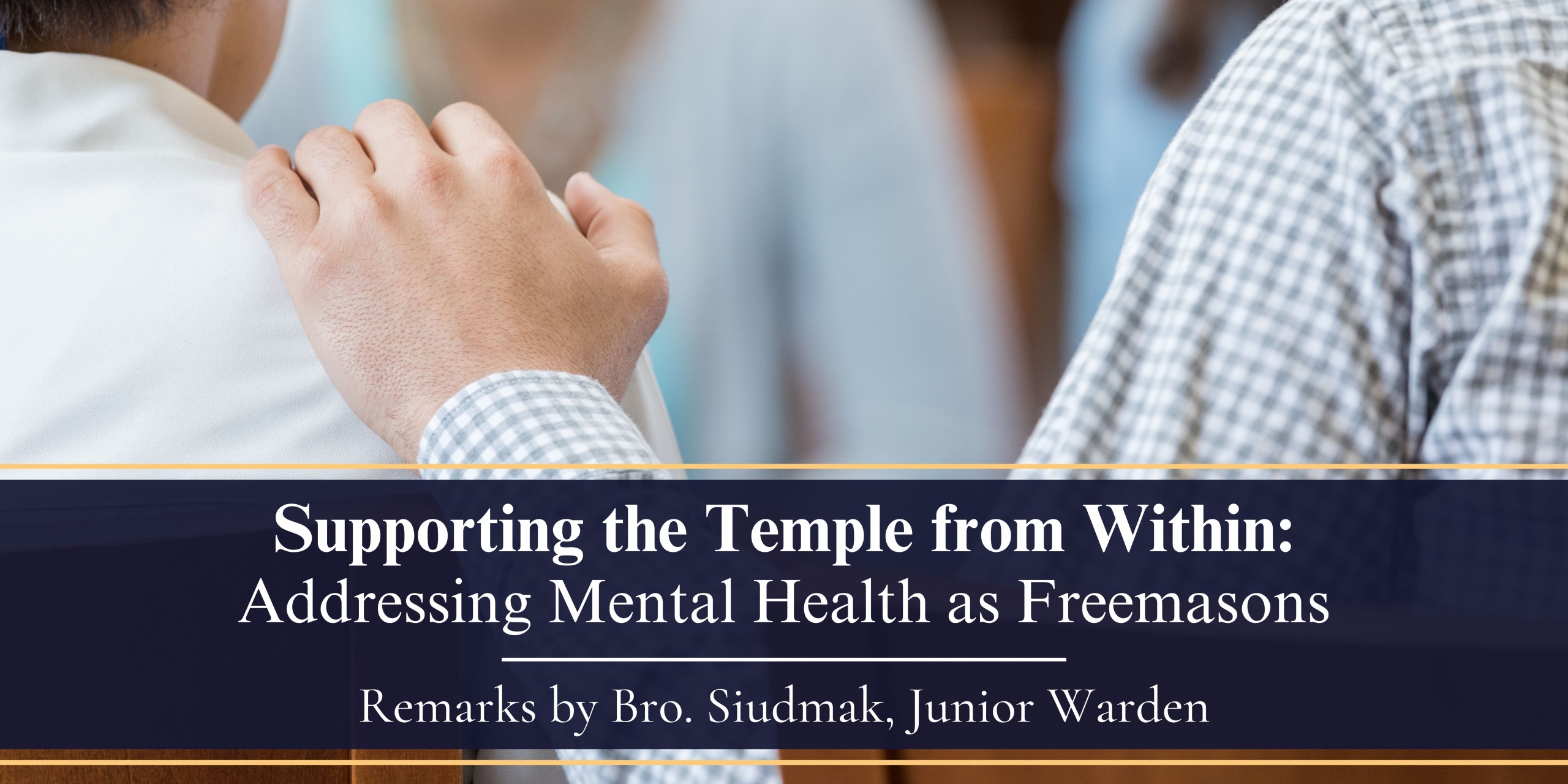
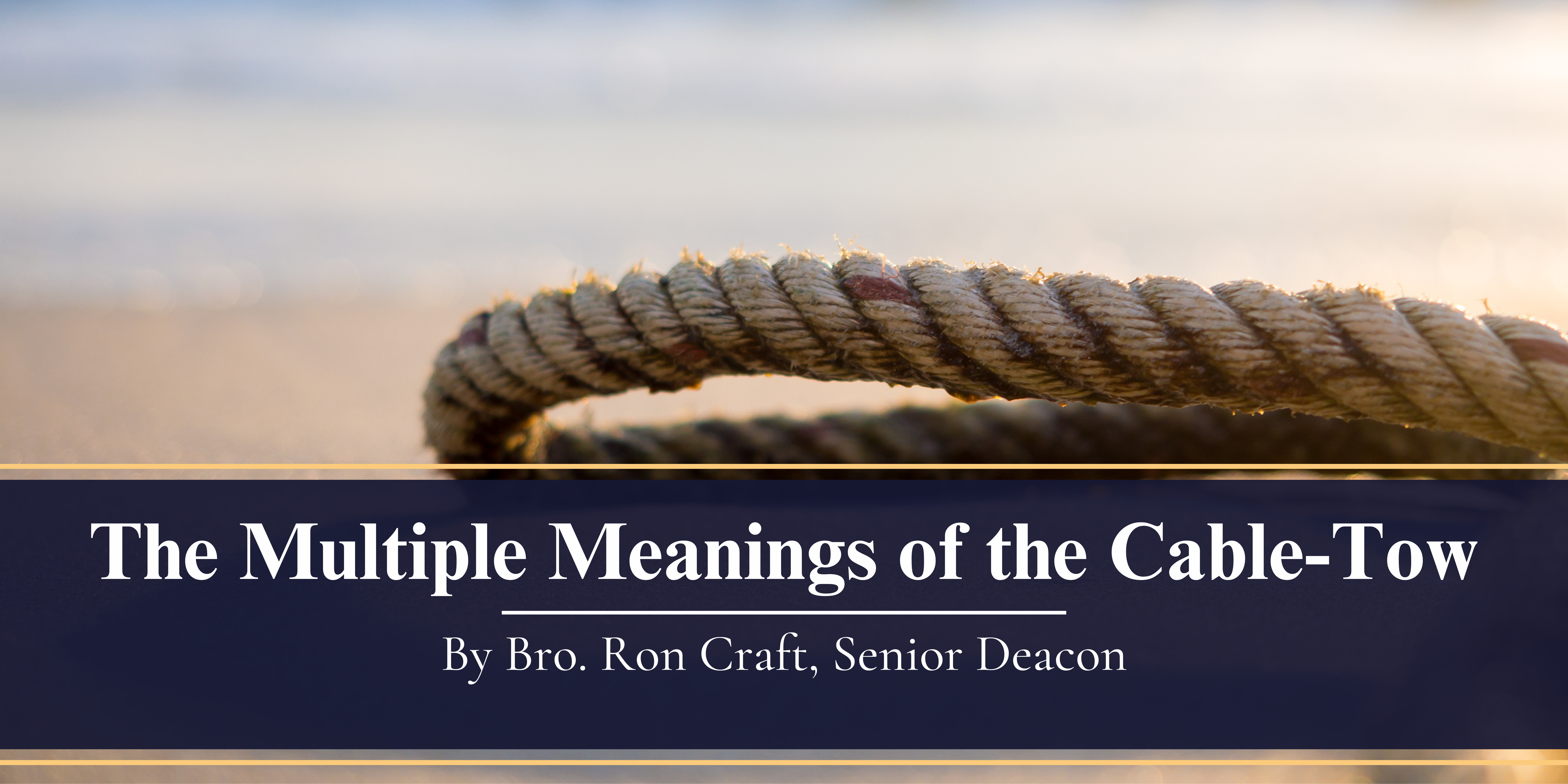
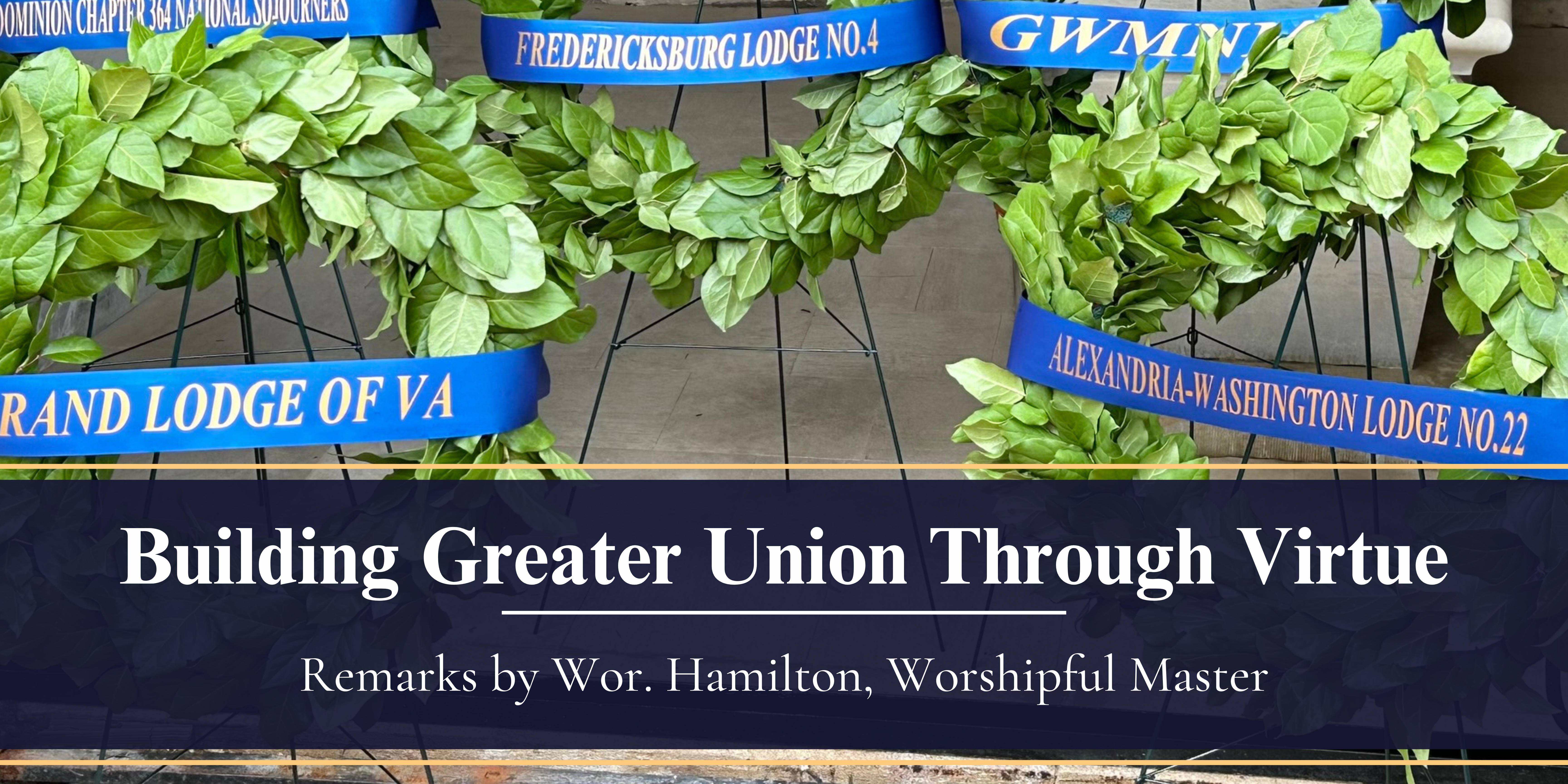
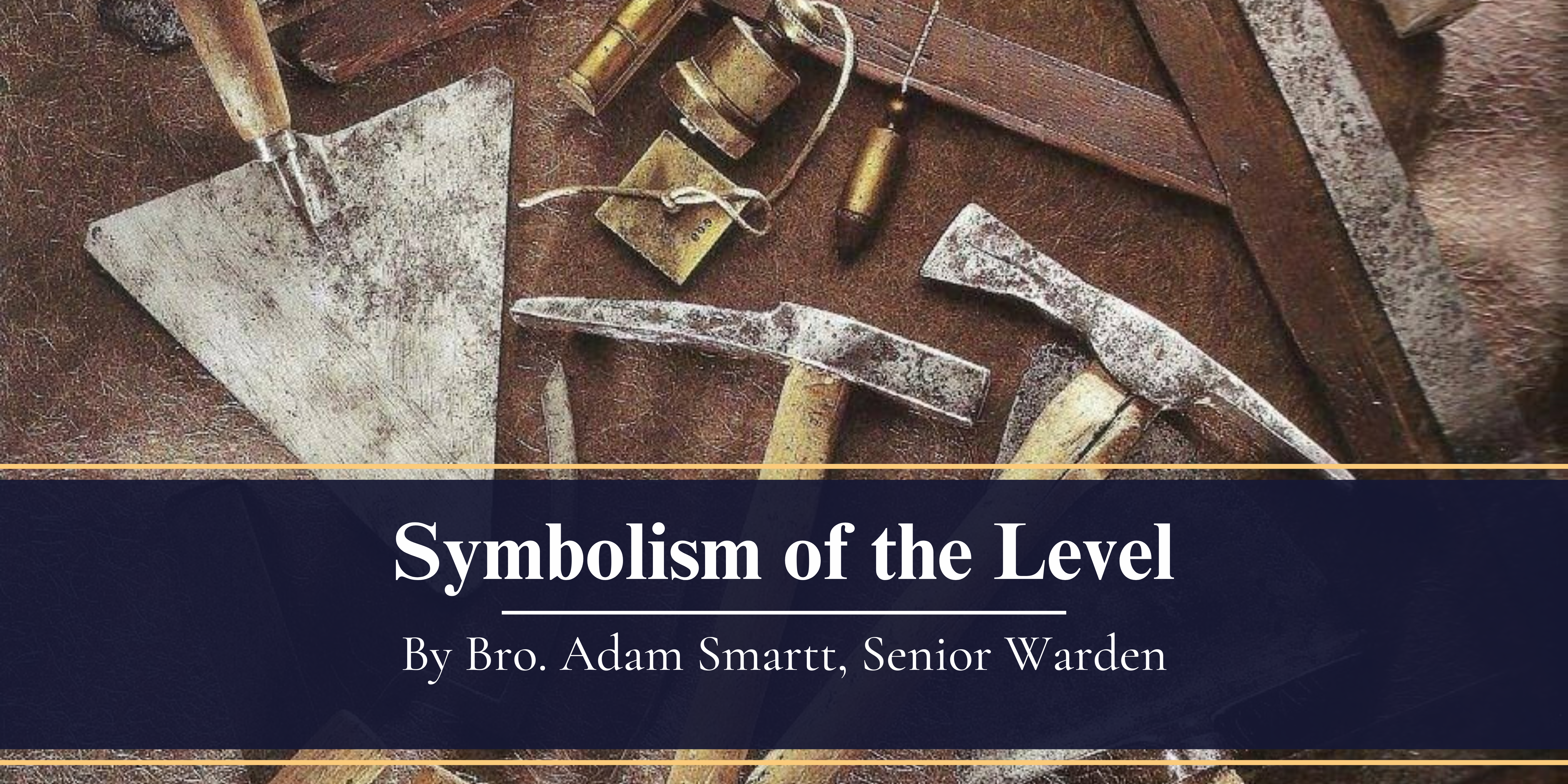
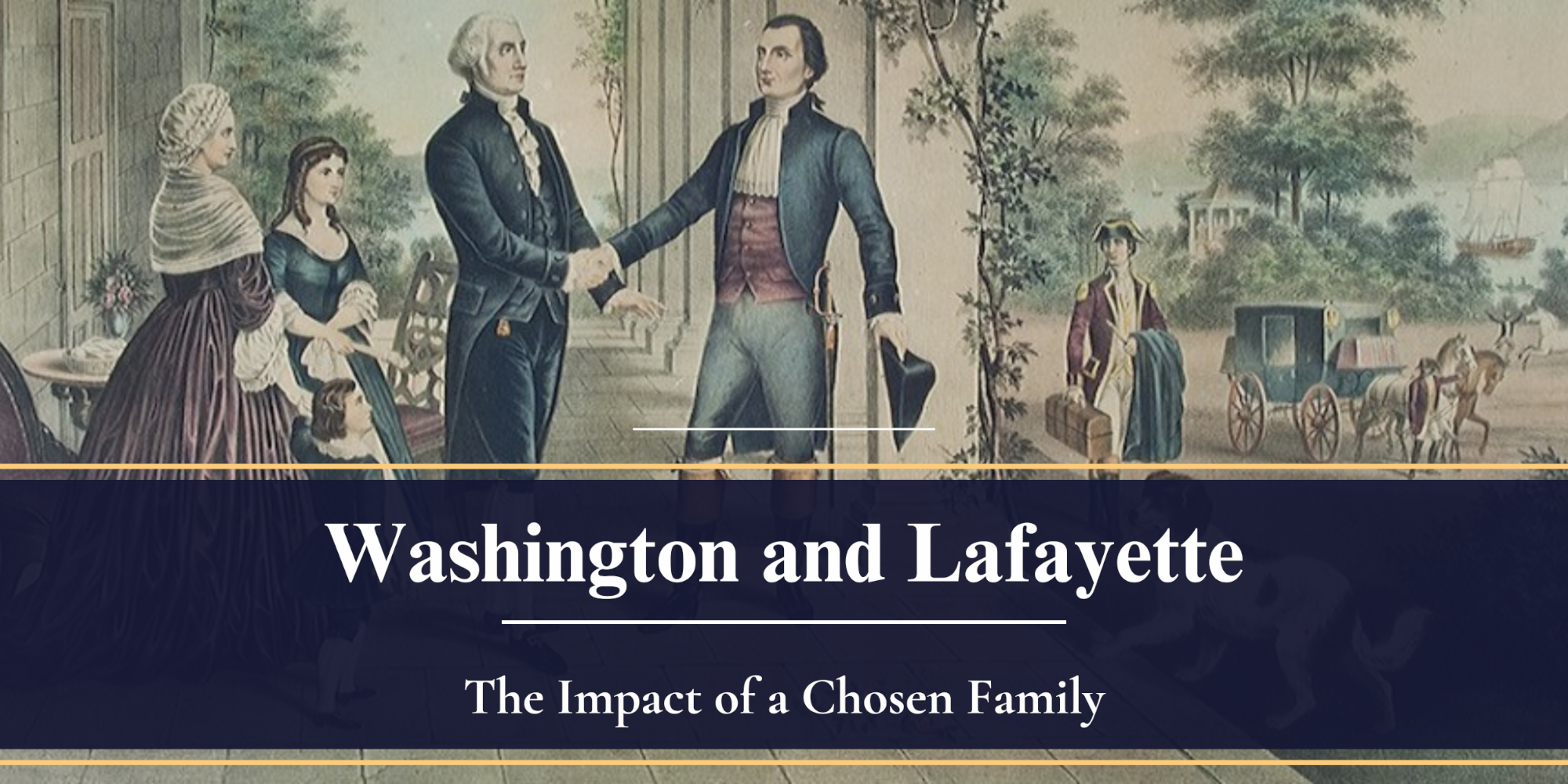
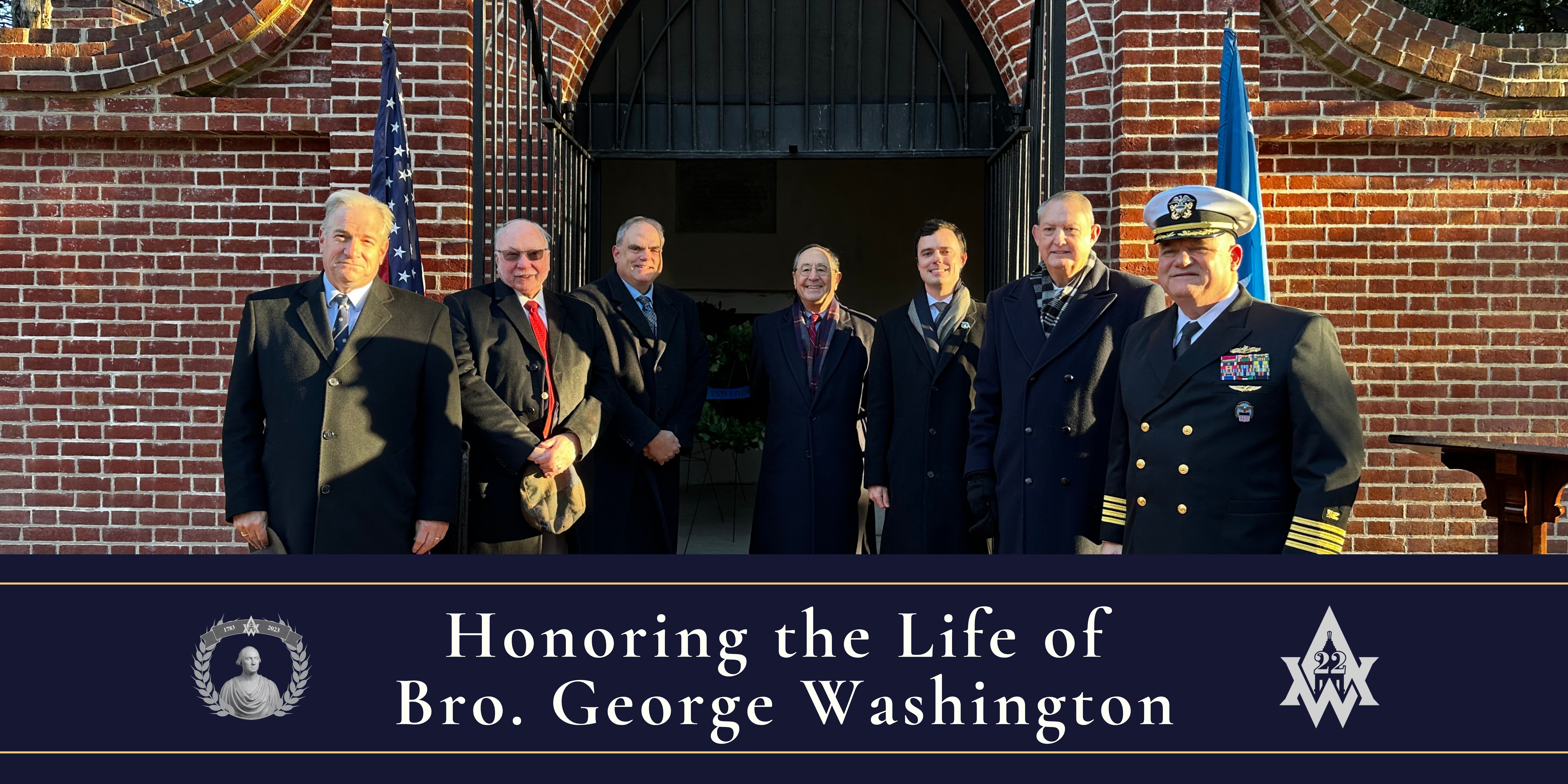
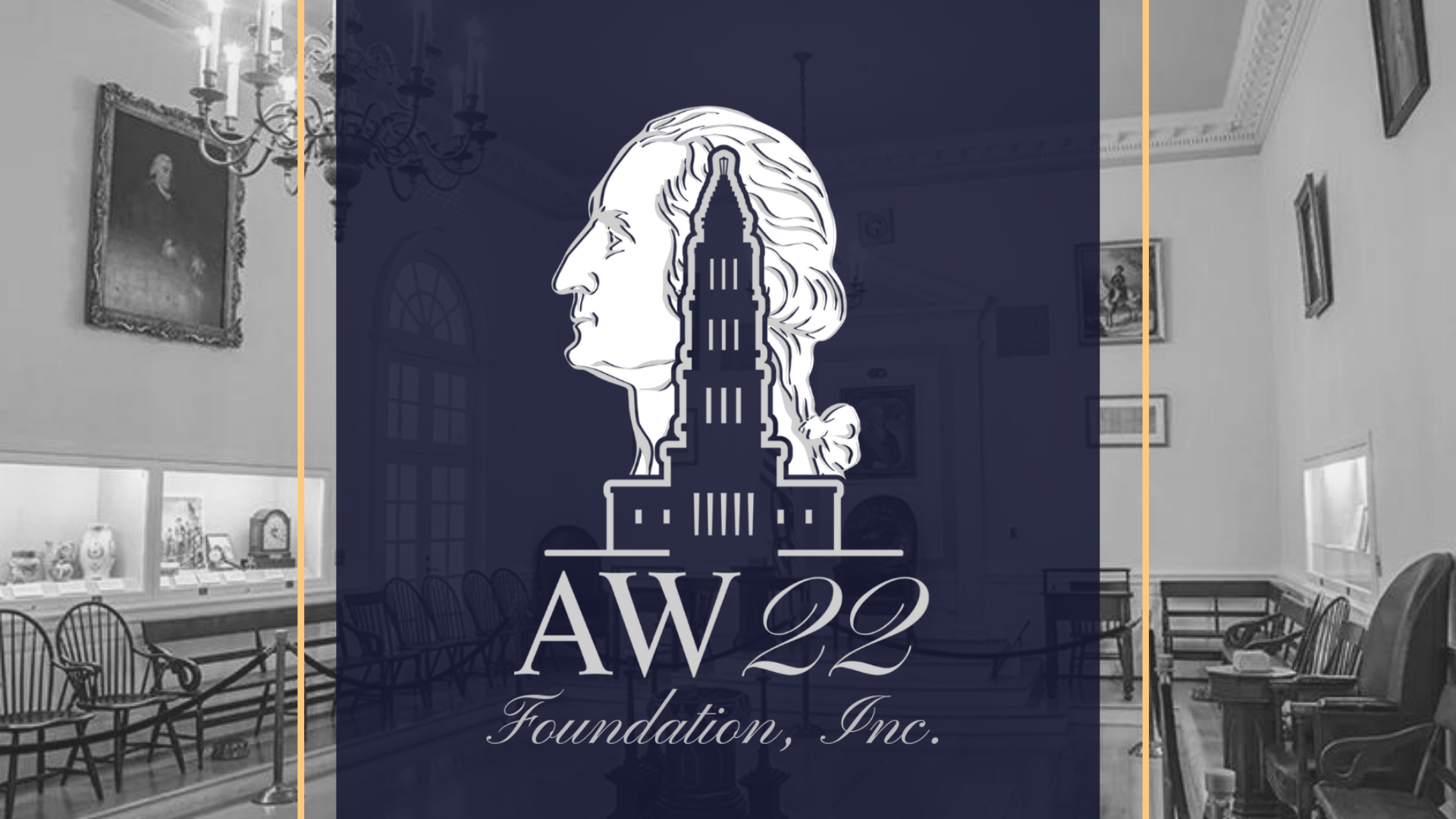
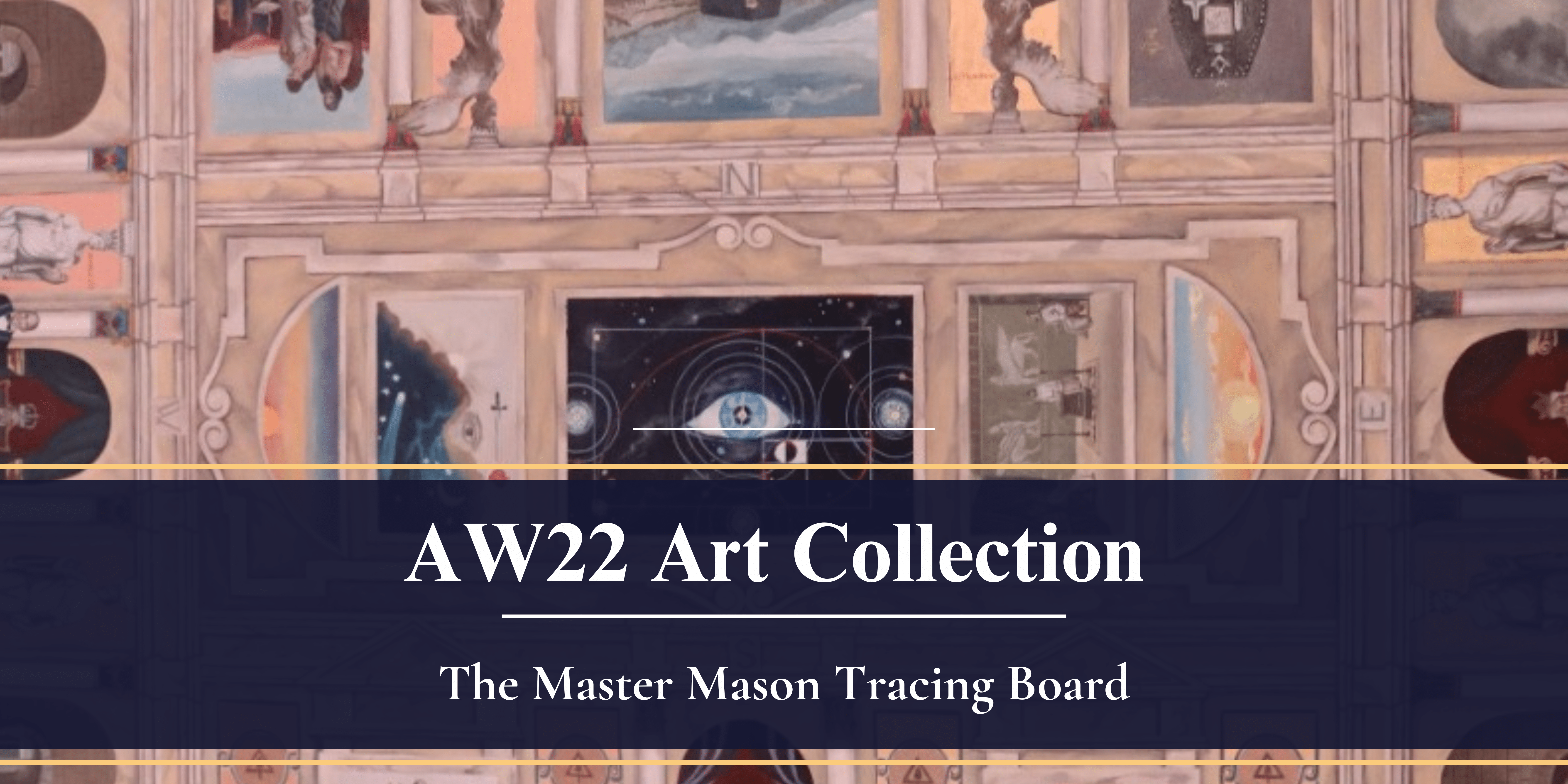

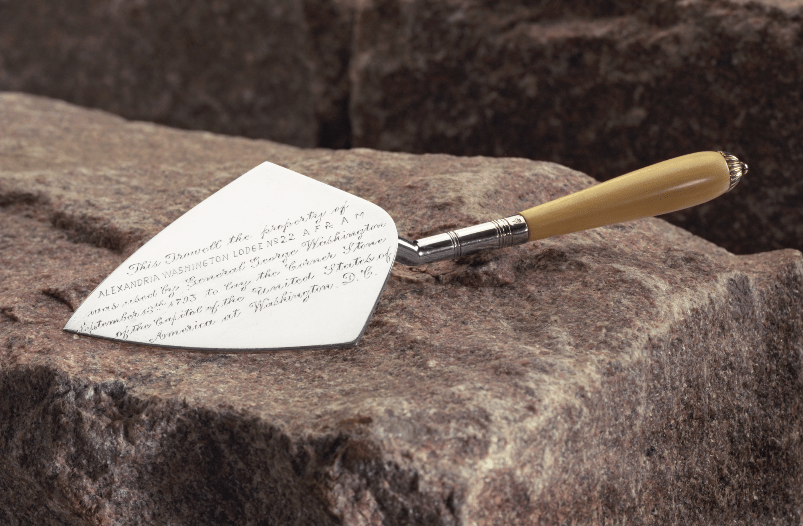
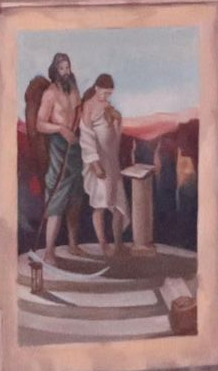
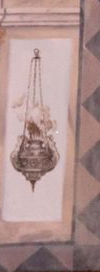

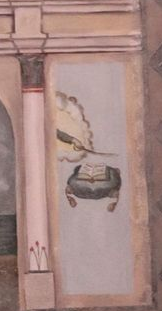
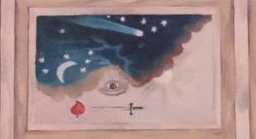
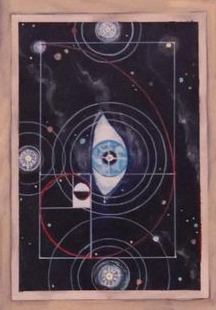
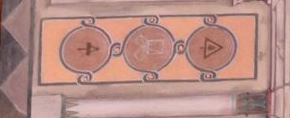
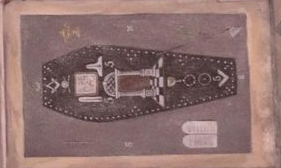
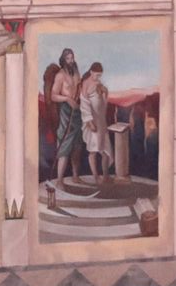

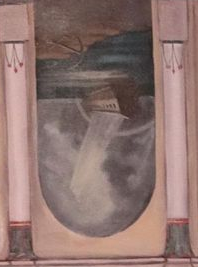
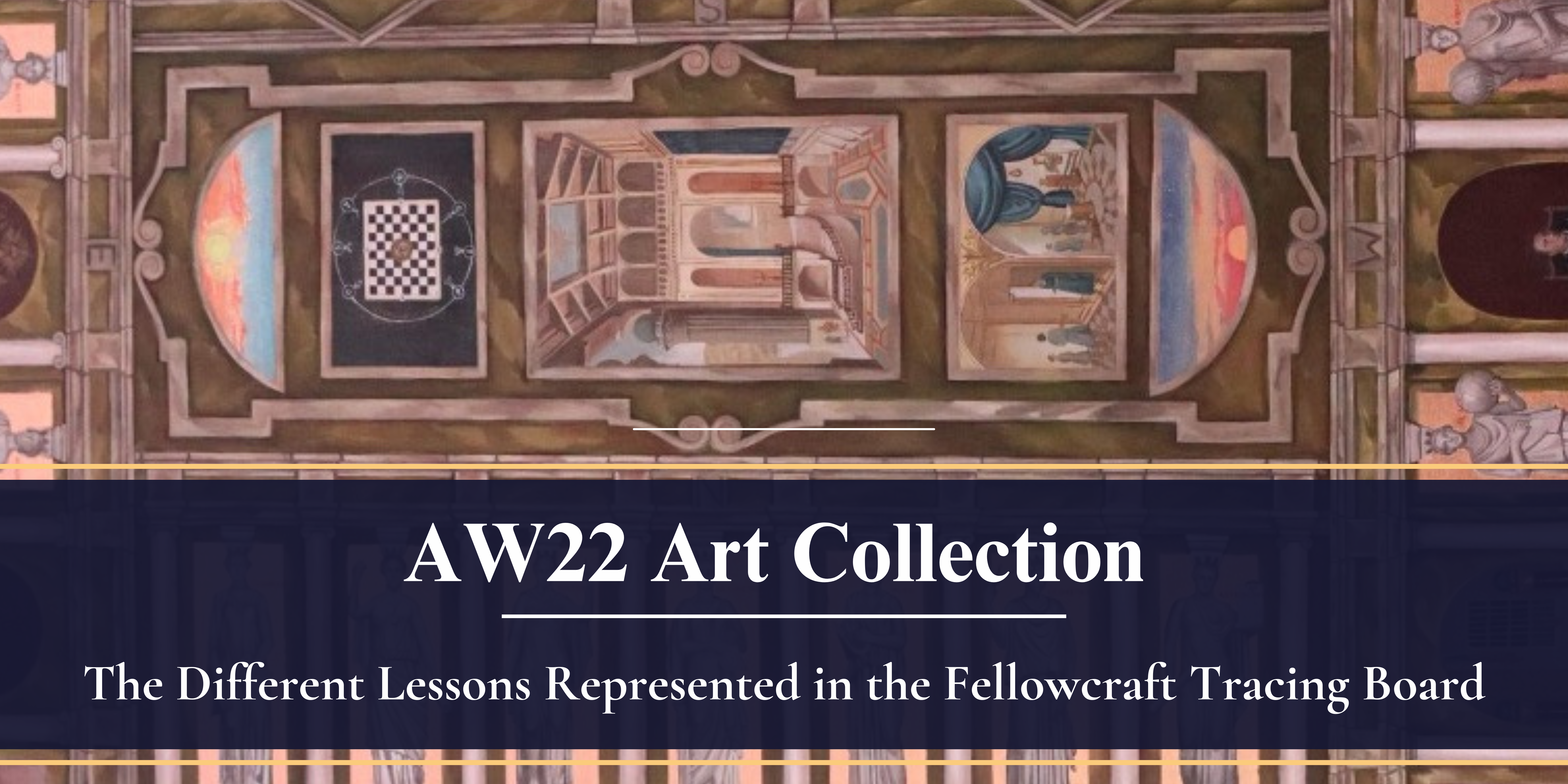
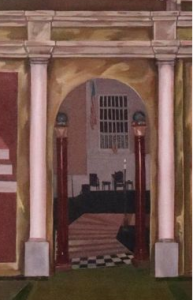 What is exquisite about this particular frame which can be seen in the Tracing board bottom right are actually the Two Pillars surmounted by the Globes that exist in the AW-22 Lodge room as seen from the West-Gate whence the candidate enters the Lodge room. However, at AW22 when not enacting the FC Degree they are stationed around the Junior Warden’s station.
What is exquisite about this particular frame which can be seen in the Tracing board bottom right are actually the Two Pillars surmounted by the Globes that exist in the AW-22 Lodge room as seen from the West-Gate whence the candidate enters the Lodge room. However, at AW22 when not enacting the FC Degree they are stationed around the Junior Warden’s station.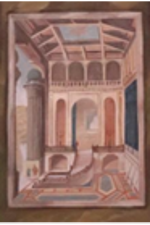 “we are now about to make an ascent through a porch, by a flight of winding stairs, consisting of three, five and, seven steps, to a place representing the Middle Chamber of King Solomon’s Temple, there to receive instructions relative to the wages due, and the jewels of a Fellow Craft”
“we are now about to make an ascent through a porch, by a flight of winding stairs, consisting of three, five and, seven steps, to a place representing the Middle Chamber of King Solomon’s Temple, there to receive instructions relative to the wages due, and the jewels of a Fellow Craft”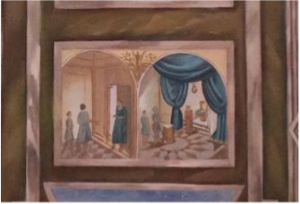
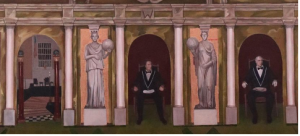
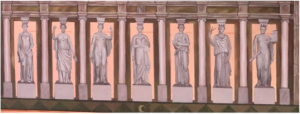
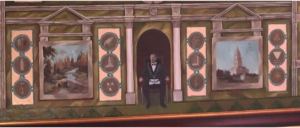
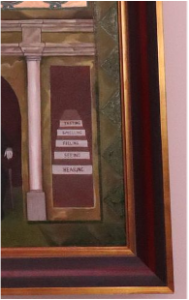 “The Five Senses of Human Nature, to-wit: Hearing, Seeing, Feeling, Smelling, and Tasting, come next in order-the first three of which are most revered by Masons, for reasons which must be apparent to every enlightened Craftsman”
“The Five Senses of Human Nature, to-wit: Hearing, Seeing, Feeling, Smelling, and Tasting, come next in order-the first three of which are most revered by Masons, for reasons which must be apparent to every enlightened Craftsman”
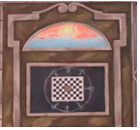 “The Mosaic Pavement is a representation of the ground floor of King Solomon’s Temple; the indented Tessel, of that beautiful border or skirting which surrounded it; and the Blazing Star is an emblem of Deity or an overruling Providence…The Mosaic Pavement is emblematical of human life, checkered with good and evil; the beautiful border which surrounds it, of the manifold blessings and comforts which surround us, and which we hope to enjoy by a faithful reliance on Divine Providence, which is hieroglyphically represented by the Blazing Star in the center”
“The Mosaic Pavement is a representation of the ground floor of King Solomon’s Temple; the indented Tessel, of that beautiful border or skirting which surrounded it; and the Blazing Star is an emblem of Deity or an overruling Providence…The Mosaic Pavement is emblematical of human life, checkered with good and evil; the beautiful border which surrounds it, of the manifold blessings and comforts which surround us, and which we hope to enjoy by a faithful reliance on Divine Providence, which is hieroglyphically represented by the Blazing Star in the center”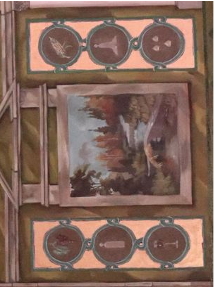
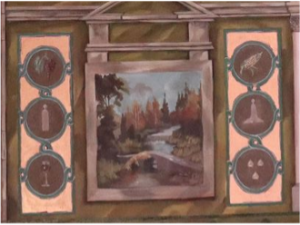
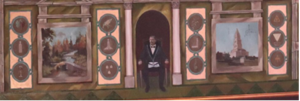
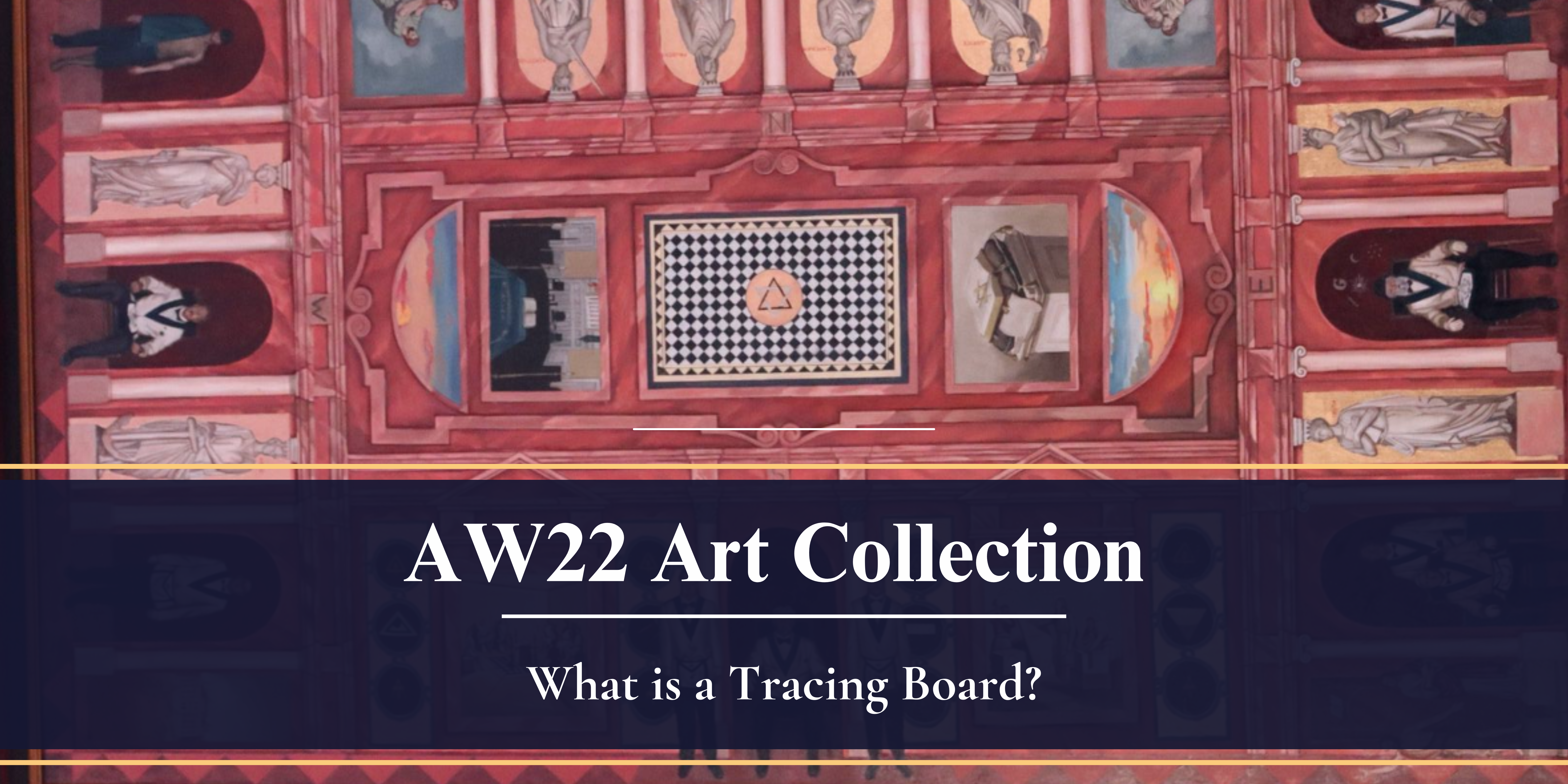
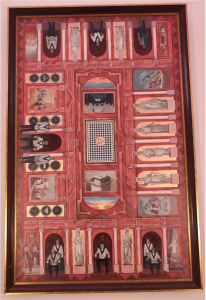
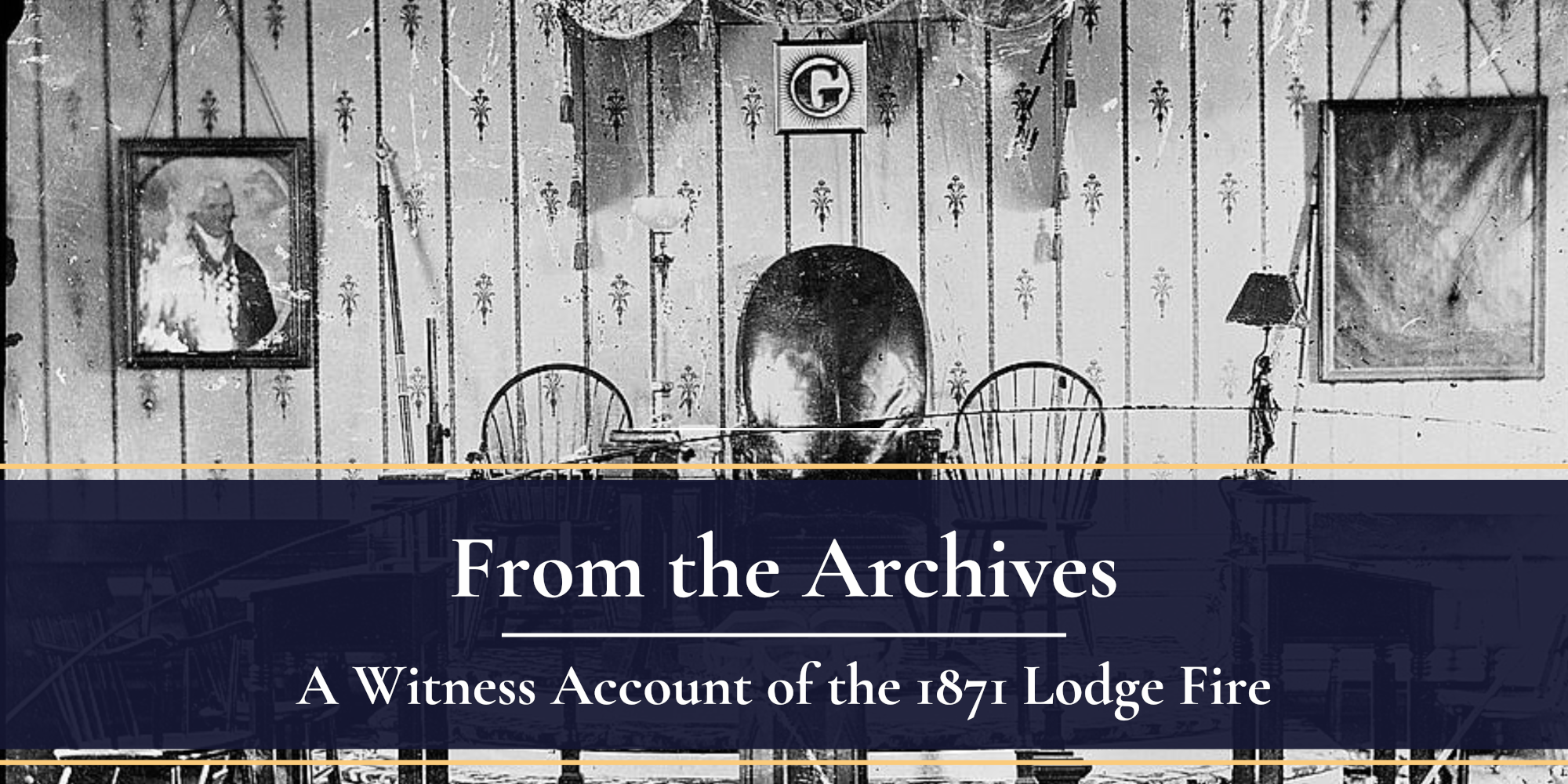
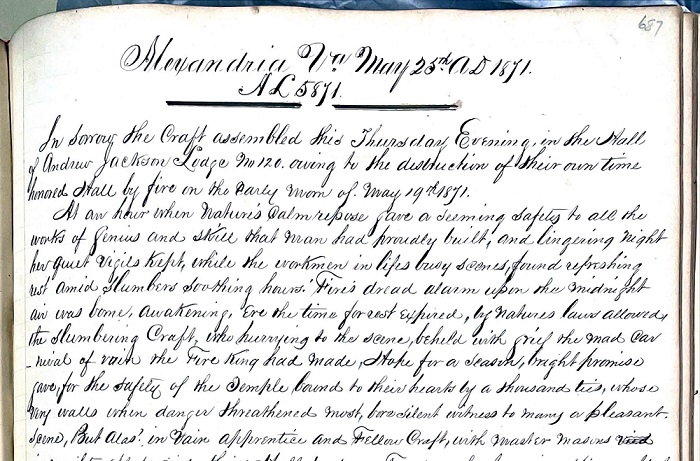 In the early morning of May 19, 1871, the townspeople of Alexandria awoke to the sounds of alarms. A fire erupted inside the city hall, which also served as a lodge space and museum operated by Alexandria-Washington Lodge No. 22 (AW22). The lodge’s members quickly arrived at the scene to help suppress the conflagration, which had spread to most of the building and threatened to destroy the entire lodge hall and museum – home to one of the earliest museums in the United States. They worked quickly to secure hundreds of priceless relics and documents on Freemasonry, politics, science, art, and popular culture. Although they were able to save a significant number of items, including the lodge’s proceedings and much of the
In the early morning of May 19, 1871, the townspeople of Alexandria awoke to the sounds of alarms. A fire erupted inside the city hall, which also served as a lodge space and museum operated by Alexandria-Washington Lodge No. 22 (AW22). The lodge’s members quickly arrived at the scene to help suppress the conflagration, which had spread to most of the building and threatened to destroy the entire lodge hall and museum – home to one of the earliest museums in the United States. They worked quickly to secure hundreds of priceless relics and documents on Freemasonry, politics, science, art, and popular culture. Although they were able to save a significant number of items, including the lodge’s proceedings and much of the 